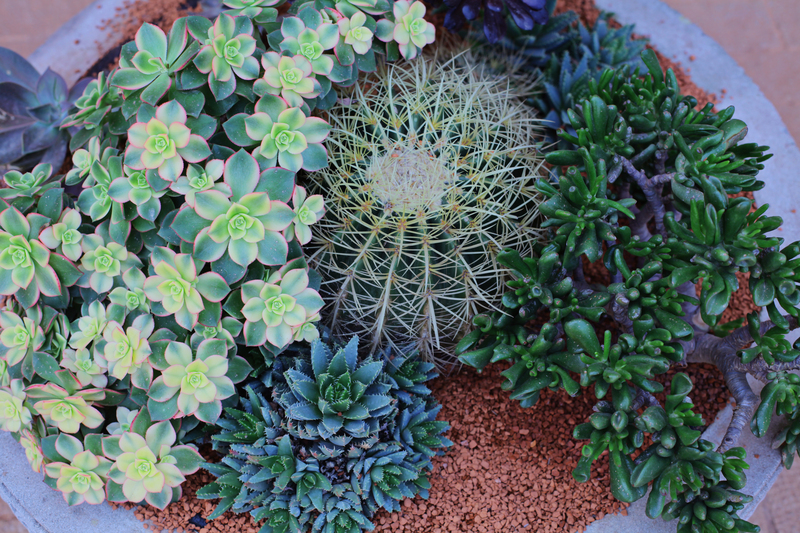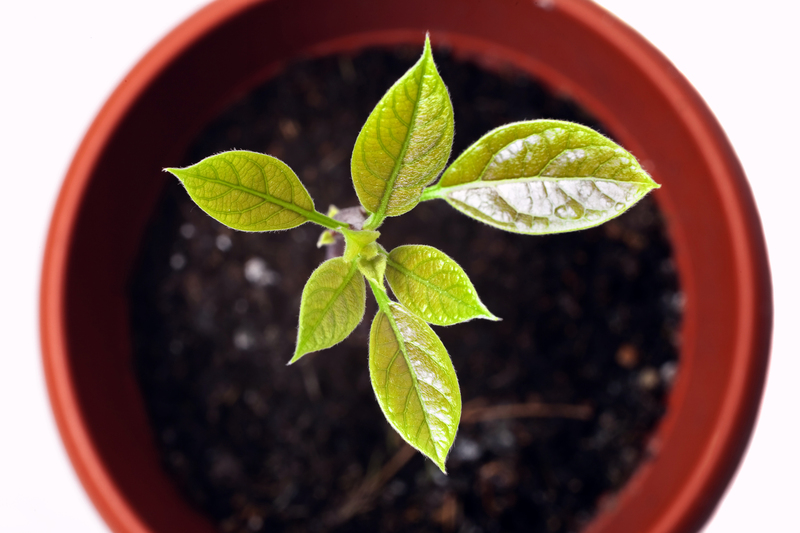Keep Your Landscape in Shape: 3 Tips for Managing Weeds
Posted on 01/06/2025

Keep Your Landscape in Shape: 3 Tips for Managing Weeds
A beautiful, well-maintained landscape is the pride of any homeowner. Yet, nothing disrupts that carefully curated look quite like a sudden invasion of weeds. Whether you have an expansive backyard, a thriving vegetable garden, or a meticulously trimmed front lawn, weeds are a persistent--and sometimes overwhelming--challenge. If you're tired of battling with stubborn intruders that mar your property's appearance, you've come to the right place.
In this comprehensive guide, we'll reveal three essential tips for managing weeds and keeping your landscape in top shape. Following these strategies will help you develop a proactive approach, reduce long-term maintenance, and ensure your plants and lawn thrive year-round. Read on for the secrets to superior weed control!
Why Effective Weed Management Matters
Weeds aren't just unsightly--they can severely impact your landscape's health. Uncontrolled, they compete with desirable plants for nutrients, water, sunlight, and growing space. This competition weakens flowers, shrubs, and grass, making them more vulnerable to disease and insects. Some weeds even release toxins, inhibiting the growth of neighboring plants.
- Resource Competition: Weeds consume vital resources, leaving less for your ornamental plants.
- Spread of Disease: Many weeds serve as hosts for pests and plant diseases.
- Decreased Aesthetic Value: A patchy, weed-infested landscape detracts from your property's curb appeal and value.
- Allergies & Safety: Certain weeds cause allergic reactions or have thorns that make your garden unsafe.
Maintaining a weed-free landscape not only enhances visual appeal but also supports the health of your garden for the long term.
Tip #1: Regular Manual Weed Removal
The foundation of effective weed management is simple: regular, thorough yard inspection and hand removal. It may sound old-fashioned, but this method allows you to target weeds before they multiply and set seeds.
Why Manual Removal Works
Weeds are most vulnerable when they're young and small. Removing them by hand (roots and all) limits regrowth and helps keep the seed bank in your soil under control.
- Prevents Spreading: Removing weeds before flowering stops them from dropping seeds and worsening the problem.
- Effective for All Weeds: Works well for annual and perennial weeds, including those resistant to herbicides.
- No Chemicals Needed: Eco-friendly and safe for children, pets, and pollinators.
Best Practices for Manual Weed Removal
- Pull After Rain or Watering: Moist soil loosens weed roots, making removal easier and more effective.
- Use the Right Tools: Invest in a sturdy hand weeder, hoe, or dandelion fork for deeper-rooted weeds.
- Dispose Properly: Don't compost weeds with seeds or viable roots; bag and remove them to avoid re-infestation.
- Monitor Regularly: Walk your landscape weekly during peak growing seasons to catch new growth early.
Consistent physical removal is your first line of defense against weed invasions, especially in garden beds and areas where mulch or ground covers aren't feasible.
Tip #2: Mulch--Nature's Weed Barrier
One of the most effective and eco-friendly weed control techniques is using mulch in your landscape. Mulch not only enhances the appearance of your garden beds but also acts as a physical barrier that blocks sunlight and prevents weed seeds from germinating.
How Mulch Works for Weed Prevention
- Suppresses Seeds: Mulch covers the soil's surface, depriving weed seeds of light and space to grow.
- Improves Soil Health: Organic mulch, like wood chips or straw, decomposes over time, enriching the soil.
- Retains Moisture: Mulch helps the soil retain moisture, benefiting desired plants and discouraging drought-tolerant weeds.
- Regulates Soil Temperature: Mulch insulates the soil, making it less hospitable for weed seedlings.
Pro Tip: Using a combination of organic mulches (wood chips, bark, straw) or inorganic options like landscape fabric and gravel can offer both aesthetic and functional benefits.
Applying Mulch for Maximum Weed Control
- Clear the Area: Remove existing weeds and debris before mulching.
- Layer It Thick: Apply at least 2-4 inches of mulch for optimal weed suppression.
- Leave Space Around Stems: Don't pile mulch against the trunks or stems of plants to avoid rot.
- Replenish Annually: Refresh mulch as it breaks down or thins out over time.
Mulching not only keeps your landscape in shape but also conserves water and reduces the need for chemical herbicides.
Tip #3: Smart Use of Herbicides
Despite best efforts, some weeds may still evade manual removal or mulching barriers. This is where herbicides can play a strategic role in weed management. However, caution and precision are critical to minimize risks to desirable plants, pets, and the environment.
Types of Herbicides for Landscape Weed Control
- Pre-emergent Herbicides: Applied before weeds sprout, these products create a chemical barrier to prevent weed seed germination. Best used early in spring or fall.
- Post-emergent Herbicides: These target actively growing weeds. Some are selective (targeting only broadleaf weeds) while others are non-selective (kill any plant they touch).
Best Practices for Herbicide Application
- Read Labels Carefully: Always follow manufacturer instructions for safety and effectiveness.
- Spot Treat: Apply only to problem areas rather than blanket spraying, which can harm beneficial plants.
- Apply in Ideal Conditions: Choose calm, dry days to avoid drift onto desired plants or runoff into storm drains.
- Wear Protective Clothing: Gloves and long sleeves protect your skin during application.
Integrating chemical weed control as a last resort in your overall strategy can give you the edge against persistent or invasive species--without compromising the integrity of your landscape.
Preventing Weeds Year-Round: Maintenance Tips
Beyond these three core methods, successful weed management depends on adopting good gardening habits and maintaining healthy, dense plant coverage.
Additional Landscape Weed Prevention Strategies
- Overseed Lawns: Thick grass crowds out most weeds. Reseed bare patches promptly to prevent weed takeover.
- Proper Irrigation: Water plants and lawns deeply but infrequently, keeping soil healthy and resilient.
- Soil Care: Regularly amend soil with compost to boost plant vigor and outcompete weeds.
- Choose Groundcovers: Plant low-growing groundcovers in problem areas to naturally shade out weeds.
- Cultivate Healthy Borders: Use edging materials or dig natural trenches to physically separate lawn from garden beds.
Consistent upkeep prevents new weed growth and supports an attractive, vibrant landscape all year long.
Natural Alternatives to Chemical Weed Control
If you prefer a more eco-conscious approach to keeping your garden weed-free, consider these natural alternatives:
- Boiling Water: Pour directly onto weeds in driveways or patios (not safe for lawn or garden beds).
- Vinegar Solutions: Household vinegar mixed with water can help scorch weeds, though results may be temporary.
- Manual Solarization: Cover large weedy areas with clear plastic sheets for several weeks in hot weather to kill existing weeds and seeds.
These solutions provide chemical-free options for small jobs or areas where children and pets play.
Common Landscape Weeds: Identification and Removal
When tackling weeds in your yard, it's helpful to identify frequent offenders to choose the best control method. Here are some common landscape weeds and removal tips:
- Dandelion: Remove with a long tap-root tool; pull before seeds appear.
- Crabgrass: Prevent with pre-emergent herbicide and dense turf.
- Chickweed: Hand-pull or mulch over bare spots.
- Creeping Charlie: Use selective post-emergent herbicides; don't mow to spread.
- Purslane: Pull young plants after watering for easy removal.
Learn to recognize and respond to these invaders early, and your landscape weed management will be that much easier.
Frequently Asked Questions About Weed Control
How often should I check for weeds in my landscape?
During peak growing seasons (spring and early summer), inspect your property at least once a week. Early detection and removal are key in preventing weed spread.
Is landscape fabric a good solution for weed prevention?
Landscape fabric can be effective beneath mulch or rocks in beds with shrubs or trees, but it's less useful in annual flower beds or vegetable gardens where frequent planting and soil work are required.
Can I compost weeds?
Compost only weed-free foliage. Avoid composting weeds that have seeds or resilient roots, as they may survive the process and re-infest garden beds.
Are organic herbicides effective?
Some organic options, like those made from clove oil or acetic acid, can kill young weeds, but multiple applications may be needed. Results vary and efficacy may not match traditional herbicides.
Conclusion: Consistency is Key to a Weed-Free Landscape
Keeping your landscape in shape and free from persistent weeds requires regular maintenance, strategic mulching, and thoughtful use of herbicides or organic alternatives. With these three powerful tips and preventive measures, you'll be well-equipped to defeat weeds before they disrupt your outdoor space.
Remember--a beautiful garden is the result of continual care and vigilance. Whether you're pulling a few dandelions from your flower beds, laying down fresh mulch in the spring, or spot-treating a stubborn patch, every action adds up to a lush, healthy landscape.
So, get started today and enjoy a weed-free yard that's the envy of the neighborhood!
- Manual Weed Removal Techniques
- Using Mulch as Weed Barrier
- Safe Herbicide Application
- Year-Round Weed Prevention
- Common Weed Identification


